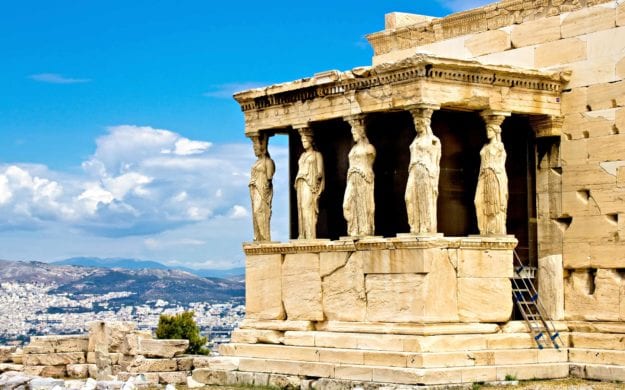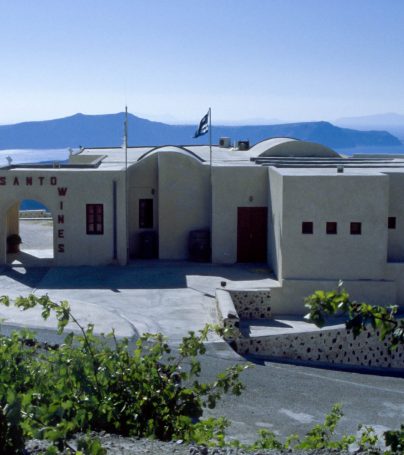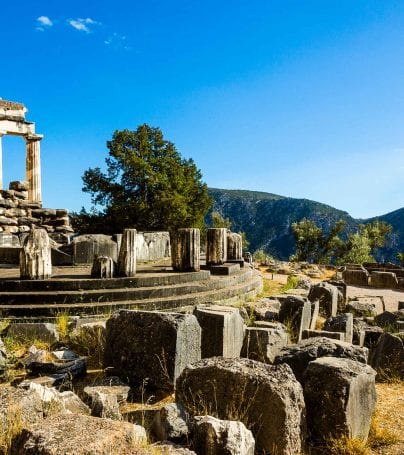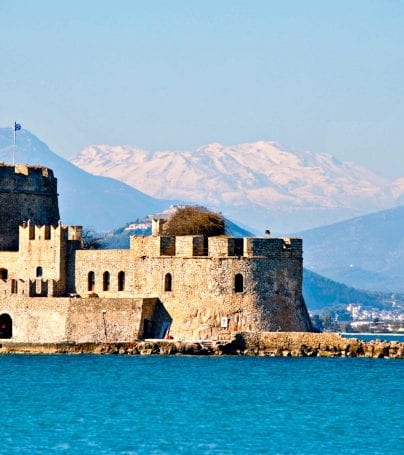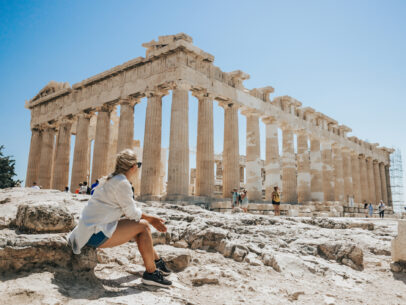Athens Adventure Tours
Athens is the largest city and capital of Greece, located in the Attica periphery of central Greece. Named after goddess Athena, Athens is one of the oldest cities in the world with a recorded history of at least 3,000 years. Today, the Greek capital is Europe’s 8th largest conurbation , a bustling and cosmopolitan metropolis with an urban population of three quarters of a million and a metropolitan population of 3.2 million people. The Athens metropolitan area is the centre of economic, financial, industrial, political, and cultural life in Greece. The city is also rapidly becoming a leading business centre in the European Union. Ancient Athens was a powerful city-state. Center of the arts, learning, and philosophy, home of Plato’s Academy and Aristotle’s Lyceum, Athens was also the birthplace of Socrates, Pericles, Sophocles, and many other prominent philosophers, politicians, and writers of the ancient world. It is widely referred to as the cradle ofWestern Civilization and the birthplace of Democracy, largely due to the impact of its cultural and political achievements during the 5th and 4th centuries BC on the rest of the then known European Continent.
The classical era heritage is still evident in the city, portrayed through a number of ancient monuments and artworks, the most famous of all being the Parthenon on the Acropolis, standing as an epic landmark of western civilization. The city has also a vast variety of Roman and Byzantine monuments, as well as a small remaining number of Ottoman monuments that project the city’s long history through the centuries. Modern landmarks can also be found, dating back as far as 1830 (establishment of the new, independent Greek State). The Greek Parliament (19th century), the Athens Trilogy (Library, University, Academy) and the new (2004) Athens Olympic Sports Complex are only some of these architectural landmarks.
Athens was the host city of the first modern-day Olympic Games in 1896 and in 2004 it welcomed the Summer Olympics back home with great success.
Athens has been a popular destination for travellers since antiquity. Over the past decade, the infrastructure and social amenities of Athens have been radically improved, in part due to the city’s successful bid to stage the 2004 Olympic Games. The Greek Government, aided by the EU, has funded money into major infrastructure projects such as the new, state-of-the-art “Eleftherios Venizelos” International Airport, the massive expansion of the Athens Metro system, and the new Attiki Odos motorway. These infrastructure projects have helped make the quality of life better for the people of Athens, and to ease overall traffic and pollution problems for the city. The city is currently the 6th most visited capital in Europe.
Large parts of the city center have been redeveloped under a masterplan called Unification of Archaeological Sites of Athens, which has also gathered funding from the EU to help enhance this project. Notably, the famous Dionysiou Aeropagitou street has been pedestrianised, forming a scenic route. The route starts from the Temple of Olympian Zeus at Vasilissis Olgas Avenue, continues under the southern slopes of the Acropolis near Plaka, and finishes just outside the Temple of Hephaestus in Theseum. This route provides the visitors views of the Parthenon and the Agora (the meeting point of ancient Athenians), away from the busy city center.
- Syntagma Square (Constitution Square) is situated in central Athens and near the site of the former Royal Palace, now the Greek Parliament, and other 19th-century public buildings. The National Garden behind the Parliament and stretching to the Zappeion is a verdant oasis in the center city. Syntagma is the largest square of the city and it is also home to a number of luxurious hotels, including the historic Grande Bretagne, Athens’ first hotel. Syntagma is essentially the tourist core of the city, being in the centre of an area where most of the famous ancient monuments are located, all within a radius of 2 km.
- Southeast of Syntagma Square stands the Kallimarmaro Stadium, the place where the first modern Olympic Games took place in 1896. It is a replica of the ancient Athens Stadium. It is the only major stadium (60,000 spectators) made entirely of white marble from Mount Penteli, the same as that used for the construction of the Parthenon.
- Athens features a number of hills. Lykavittos is one of the tallest hills of the city proper that, according to an ancient legend, was actually a boulder thrown down from the sky by the Goddess Athena. Located in the city centre, near Alexandras Avenue and Vassilissis Sofias Avenue, it offers views of sprawling Athens below. On top of it, stands St. George’s church. Philopappos Hill is yet another famous hill, located just to the southwest of Acropolis.
- The city’s classical museums include the National Archaeological Museum of Athens at Patission Street (which holds the world’s greatest collection of Greek art), the Benaki Museum in Pireos Street (including its new Islamic Art branch), the Byzantine Museum and the Museum of Cycladic Art (the Stathatos Mansion) in the central Kolonaki district (recommended for its collection of elegant white metamodern figures, more than 3,000 years old). Most museums were renovated ahead of the 2004 Olympics. A new Acropolis Museum, scheduled to open in late 2006 in the Makriyanni district was designed by Swiss-French architect Bernard Tschumi. The Athens Planetarium, located in Andrea Syngrou Avenue, is considered to be among the world’s best.
- The old campus of the University of Athens, located in the middle section of Panepistimiou Street, is one of the finest buildings in the city. This combined with the adjacent National Library and the Athens Academy form the imposing “Athens Trilogy,” built in the mid-19th century. However, most of the university’s functions have been moved to a much larger, modern campus located in the eastern suburb of Zográfou. The second most significant academic institution of the city is the Athens Polytechnic School (Ethniko Metsovio Politechnio), located in Patission Street. More than 20 students were killed inside the university in November 17, 1973 during the Athens Polytechnic Uprising against the military junta that ruled the nation from April 21, 1967 until July 23, 1974.
Information based on http://en.wikipedia.org/wiki/Athens
Customize Your Dream Adventure
We are here to help craft tailor-made adventures for individuals, couples, families, and groups of explorers.

